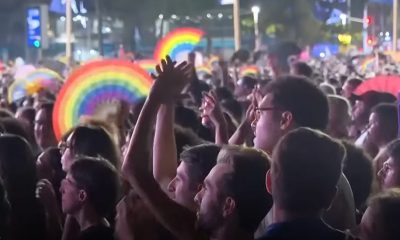Arts & Entertainment
All hail the queen
Madonna’s back but a lot is at stake — can she still deliver in a post-Gaga world?

Madonna sometimes likes to lay low for a few years, give people a chance to miss her, then come roaring back with a flurry of new projects and appearances. And the world is in the throes of the biggest such onslaught in years.
It’s been percolating for weeks — her song “Masterpiece” was a surprise winner at last month’s Golden Globes, her interview with Cynthia McFadden on ABC’s “20/20” found the singer famously weighing in on Lady Gaga and she was on Jay Leno’s “Tonight Show” this week. Fans are salivating in anticipation over Sunday night’s Super Bowl halftime performance, this week’s release of new single “Give Me All Your Luvin” (with Nicki Minaj and M.I.A.), new album “MDNA” (slated for a March 26 release) and, to a markedly lesser degree according to some camps, the new movie “W.E.” which had a limited release in December and went into slightly wider U.S. release this week (no word yet on D.C. screenings).
Madonna fans, of course, are whipped into a frenzy but the rest of the world is curious too and it raises an ocean of questions: Is too much being made of the Madonna/Gaga comparison? How can Madonna call Gaga’s work “reductive” when the former spent years mining old pop culture imagery for inspiration? Is it unfair that we keep wondering if Madonna still “has it” to a degree we don’t require of, say, the Stones or U2 each time they re-emerge? And could Madonna — known, of course, for her controversial TV performances — risk a Janet-caliber disaster if she tries something outrageous at the Super Bowl? We checked in with several gay pop culture observers — some fans, some not — to weigh in.
Snark king Michael Musto, famous for his “La Dolce Musto” column in the Village Voice and author of the new book “Fork On the Left, Knife in the Back,” says, for starters, that the similarities between Gaga’s “Born This Way” and Madonna’s “Express Yourself” justify some questioning.
He calls Madonna “the ultimate pop culture sponge,” but says it’s important to differentiate between homage and an all-out rip-off.
“It wasn’t Madonna at all who was pointing this out at first,” Musto says. “Everybody online was chirping that it was eerily similar with the chord progressions and the rappy part being kind of ‘Vogue’-ish,” he says. “But I’m all for anything that drives Madonna crazy … her haughtiness, her pretentiousness. I mean let’s face it, she’s not the warmest tool in the shed and that has led to some ill will. Lady Gaga is deeply talented and obviously a better singer than Madonna, though I do think Madonna was great for calling out that one song. I am still on the Gaga team, but I did recently write that Madonna has, once again against all odds, made herself hot again just by putting herself out there.”
Musto predicts Madonna will continue to stay front and center in the pop culture limelight as long as she wants.
“She comes at it with steely determination and she wears these blinders 24 hours that bar out negativity,” he says. “To her, her new project is the best thing in the world. Yes, the deck is increasingly stacked against her, but she knows all the tricks to stay on top. She knows to work with the young, hot people and once again, she’s made herself hotter than she’s been in a long time.”
Others say Gaga’s success doesn’t mean Madonna can’t continue in a big way too.
“I don’t think there has to be a Gaga-versus-Madonna thing like you’re either one or the other,” says Michael Crawford, a gay activist with Freedom to Marry who’s been a huge Madonna fan since the 1983 single “Burning Up” was released. “It’s not like you’re either a Republican or a Democrat. Clearly I worship the ground Madonna walks on and I always will, but I think Gaga is very good too. A lot of people just want to be bitchy but Madonna is Madonna, Gaga is Gaga.”
Others say the comparisons are inevitable and warranted.
“I’ve always told the rabid Madonna fans who’ve said Gaga is overly inspired by others that they’re on a weak foundation considering Madonna’s many homages and references in her work,” says Matthew Rettenmund, the gay author of “Encyclopedia Madonnica.” “Sometimes when you listen to Madonna’s most ardent fans, the ones who dislike Gaga anyway, they are using many of the exact same slams against Gaga that were used against Madonna her whole career by her detractors. That lack of perception is discouraging because I think Madonna’s work does attract pretty smart fans. Her references are not low brow and while you don’t have to understand every one of them to enjoy her work, being educated and informed does enhance your appreciation of it. I think Lady Gaga is the only artist in 30 years to even approach Madonna’s blueprint and I hope she is able to change and grow and keep it interesting in the way Madonna has been able to. One doesn’t cancel out the other.”
Madonna, of course, clearly channeled Marilyn Monroe — from the all out recreation of the “Material Girl” video to the more subtle bleached blonde looks she sported in the “Bedtime Stories” and “Who’s That Girl” eras — but is that any different from what Gaga’s doing with her or what Monroe herself may have channeled from her own predecessors such as Jean Harlow?
“It would be interesting if Marilyn had been around in the ‘80s and gone on ‘Nightline’ or something and been asked about Madonna,” says local nightlife impresario Ed Bailey, who DJs the popular Madonnarama events here and around the country. “I think [the ‘Material Girl’ video] was not just using that old concept for her own good, it was more of an homage and a statement about a strong powerful woman, which is something that clearly speaks to Madonna. I think there is a line between copying somebody and taking inspiration from something and there is a line between those two concepts. Sometimes it’s very blurry and sometimes it’s very clear.”
Rettenmund says the comparisons get silly after a while.
“I think it says more about gay men in particular and how they project themselves into their idols and how personally we take this trivial stuff,” he says. “I mean, ‘My diva is better than your diva,’ is the level at which this is and my reaction to it, aside from obviously admiring and liking Madonna for 30 years and being brand loyal, is that I love Gaga too and I’m happy to have all the divas around. It’s gay-on-gay crime to be attacking over this nonsense. It’s a homosexual civil war.”
Others wonder if Madonna will continue to be able to capture the world’s attention indefinitely. She’s been at it for decades now and even with all the changes in the way people hear and buy music, pop radio — especially in the U.S. — is as much a young person’s game as it ever was, especially for women artists. On the last few albums, Madonna almost always manages a Billboard Hot 100 top 10 hit with the first single, but follow-up singles routinely fail to chart stateside (they do better abroad and on the dance chart) and her last few singles — “Celebration” and “Revolver” — failed to hit big on U.S. radio. Younger divas — from Rihanna to Kelly Clarkson to Gaga — are logging much higher numbers. But while her chart peaks have waned, Madonna’s concert tours have skyrocketed in popularity.
Musto says that’s just how the industry works.
“I mean imagine if Peggy Lee had released something in the ‘80s or something,” he says “Would it have charted? No way, not unless she hooked up with the Bee Gees or something. Diana Ross could come out with the most amazing song ever right now, it wouldn’t get played. Working with these younger artists, like M.I.A., that’s [Madonna’s] way around it.”
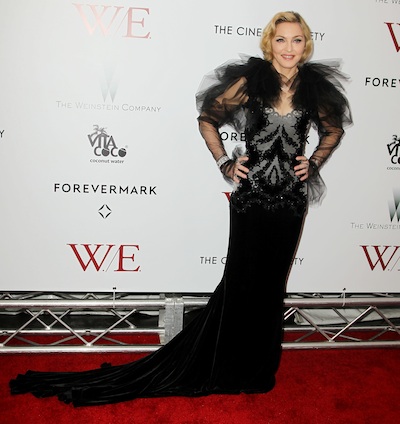
Madonna at the New York premiere of 'W.E.,' the new movie she co-wrote and directed. (Photo by Amanda Schwab; courtesy the Karpel Group)
Bailey says this time could be different.
“I’ve been in clubs for 20 years and never in that entire time has there been a time when the dance music in the club and pop on the radio were identical until now,” he says. “It’s just the way the world is right now. People are listening to Lady Gaga and Chris Brown and David Guetta and Flo Rida, you wouldn’t call them pop artists really. They’re dance artists. Now it’s every single thing you hear. People have an appetite now for that dance/pop sound with Rihanna, Katy Perry. I think for Madonna, this is gonna work out really well.”
And as for the Super Bowl? Is Madonna taking pot shots at her old rival Janet Jackson when she promises “no nipples” or is it just more of the gays making too much of off-the-cuff remarks?
Rettenmund says it will be huge. Rumors abound that she’s invited the Gay Men’s Chorus of Indianpolis to join her on stage.
“I’m assuming it’s going to be a visual orgy of cheerleading with water cooler moments,” he says. “Madonna is an artist who is never considered fully proven … every time she returns, there is this expectation of ‘OK, show me’ from some quarters. And the Super Bowl is no exception, except this time Madonna has set it up as a make-or-break moment of her own doing … so it has to be great. She knows that and in the past, she has lived up to expectations.”
Bailey calls it “a tall order.”
“The Black Eyed Peas were really good last year and she’s got to live up to that. It has to be a visual spectacle. She can’t just come out and say, ‘I’m gonna strip it all back and just make it about good, quality music.’ That won’t work.”
And if a stunt should backfire?
“Madonna would just laugh and keep going,” Crawford says. “I think Janet is really great, but Madonna just goes for it and makes no apologies … Janet apologized and Justin sold her out, there was a lack of strength in that whole episode. Madonna has a unique ability to make things work to her advantage.”
Music & Concerts
Indigo Girls coming to Capital One Hall
Stars take center stage alongside Fairfax Symphony
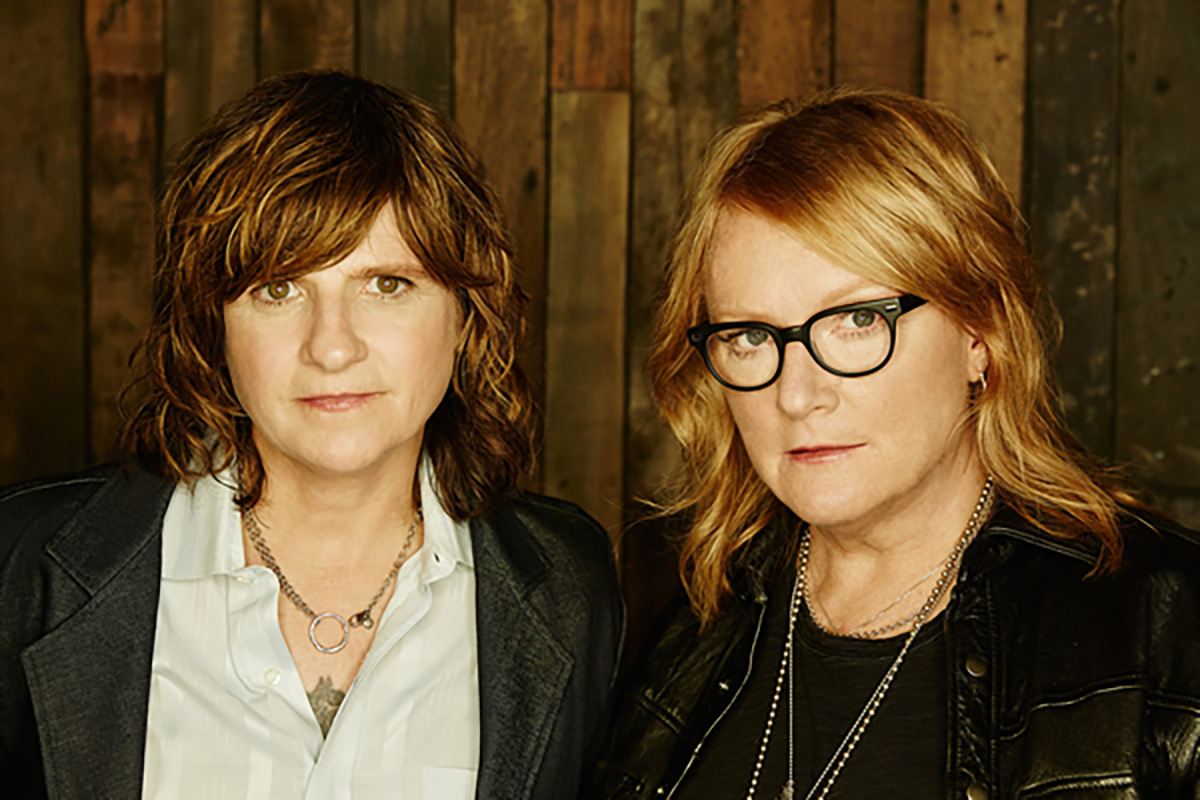
Capital One Center will host “The Indigo Girls with the Fairfax Symphony Orchestra” on Thursday, June 19 and Friday, June 20 at 8 p.m. at Capital One Hall.
The Grammy Award-winning folk and pop stars will take center stage alongside the Fairfax Symphony, conducted by Jason Seber. The concerts feature orchestrations of iconic hits such as “Power of Two,” “Get Out The Map,” “Least Complicated,” “Ghost,” “Kid Fears,” “Galileo,” “Closer to Fine,” and many more.
Tickets are available on Ticketmaster or in person at Capital One Hall the nights of the concerts.
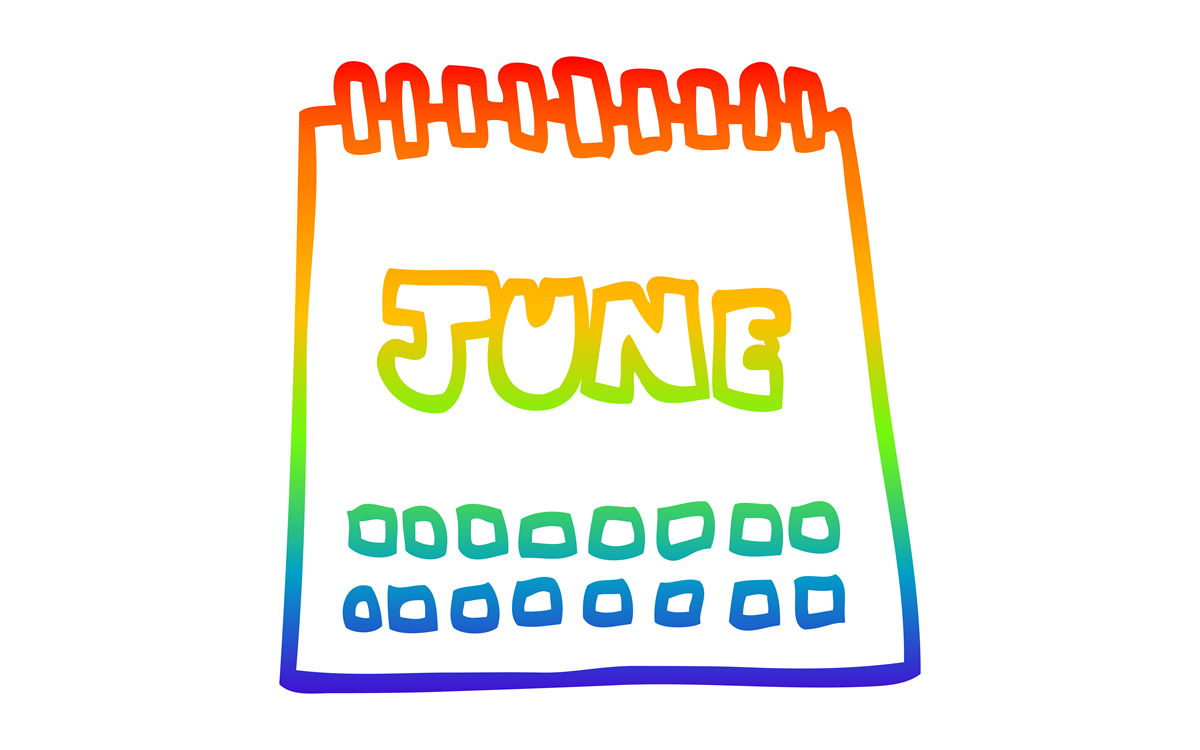
Friday, June 13
“Center Aging Friday Tea Time” will be at 2 p.m. in person at the DC Center for the LGBT Community’s new location at 1827 Wiltberger St., N.W. This is a social hour for older LGBTQ adults. Guests are encouraged to bring a beverage of choice. For more details, email [email protected].
Women in Their Twenties and Thirties will be at 8 p.m. at Wundergarten. An update will be posted the night of the event on where to find WiTT’s table. There’ll be a Pride flag to help people find the group. For more details, join WiTT’s closed Facebook group.
Go Gay DC will host “LGBTQ+ Community Pride Month Happy Hour” at 7 p.m. at Freddie’s Beach bar and Restaurant. This event is ideal for making new friends, professional networking, idea-sharing, and community building. This event is free and more details are available on Eventbrite.
Saturday, June 14
Go Gay DC will host “LGBTQ+ Community Pride Month Brunch” at 11 a.m. at Freddie’s Beach Bar & Restaurant. This fun weekly event brings the DMV area LGBTQ+ community, including Allies, together for delicious food and conversation. Attendance is free and more details are available on Eventbrite.
Rainbow History Project will host “Behind the Scenes With the Senior Curator of ‘Pickets, Protests and Parades’” at 7:30p.m. at Freedom Plaza. This behind-the-scenes experience offers a rare glimpse into the creative process behind this groundbreaking showcase of DC’s LGBTQ+ history. Learn about the bold design decisions that shaped the Quote Wall and Hero Cubes and the powerful stories that almost made the cut. Tickets cost $82 and can be purchased on Eventbrite.
Monday, June 16
“Center Aging Monday Coffee Klatch” will be at 10 a.m. on Zoom. This is a social hour for older LGBTQ+ adults. Guests are encouraged to bring a beverage of choice. For more details, email [email protected].
Genderqueer DC will be at 7 p.m. in person at the DC Center for the LGBT Community. This is a support group for people who identify outside of the gender binary. Whether you’re bigender, agender, genderfluid, or just know that you’re not 100% cis. For more information, visit their website at www.genderqueerdc.org or check us out on Facebook.
Tuesday, June 17
Bi+ Roundtable and Discussion will be at 7 p.m. on Zoom. This is an opportunity for people to gather in order to discuss issues related to bisexuality or as Bi individuals in a private setting. Check out Facebook or Meetup for more information.
Wednesday, June 18
Job Club will be at 6 p.m. on Zoom. This is a weekly job support program to help job entrants and seekers, including the long-term unemployed, improve self-confidence, motivation, resilience and productivity for effective job searches and networking — allowing participants to move away from being merely “applicants” toward being “candidates.” For more information, email [email protected] or visit thedccenter.org/careers.
“Legends Live Loud: A Queer Karaoke Experience” will be at 7 p.m. at the DC Center for the LGBT Community. This will be a dynamic, Center-wide karaoke event celebrating the brilliance and cultural impact of some of our most colorful queer icons. The Center will honor legends through music, pop culture, dance, and inextinguishable liberation. For more details and to sign up, visit the DC Center’s website.
Thursday, June 19
Go Gay DC will host “LGBTQ+ Book Club” at 7:30 p.m. at Federico Ristorante Italiano. This book club is co-hosted by EQUALITY NoVa and is another opportunity to engage in a fun and rewarding activity. The group doesn’t discriminate when it comes to genres it reads – from classic literature to best selling novels to biographies to histories to gay fiction. For more details, visit Eventbrite.
Cultivating Change Foundation will host “Cultivating Pride Happy Hour” at 5:30 p.m. at Dacha Beer Garden. This Pride month, the organization is inviting LGBTQ+ people and allies in food and agriculture to come together in communities nationwide. These informal gatherings are a chance to connect, celebrate, and build community, whether it’s over coffee, a cocktail, or a conversation. Attendance is free and more details are available on Eventbrite.
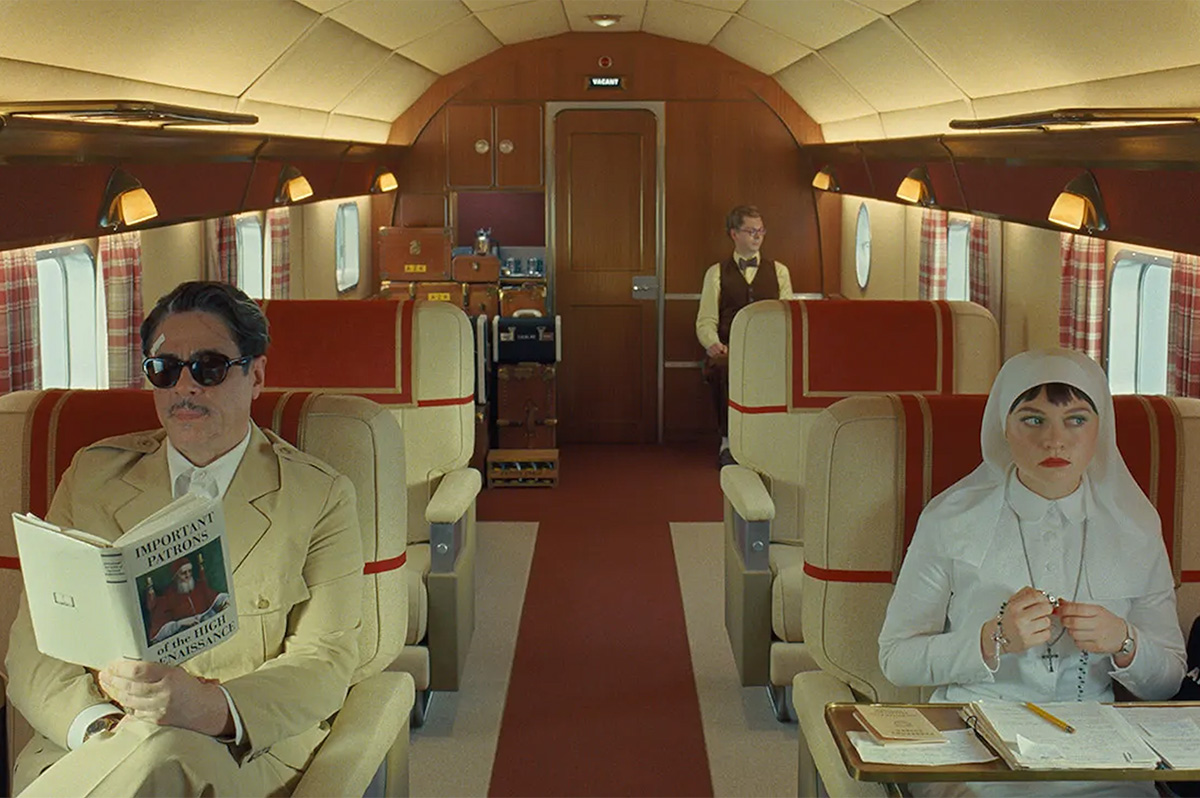
There was a time, early in his career, that young filmmaker Wes Anderson’s work was labeled “quirky.”
To describe his blend of dry humor, deadpan whimsy, and unresolved yearning, along with his flights of theatrical fancy and obsessive attention to detail, it seemed apt at the time. His first films were part of a wave when “quirky” was almost a genre unto itself, constituting a handy-but-undefinable marketing label that inevitably became a dismissive synonym for “played out.”
That, of course, is why every new Wes Anderson film can be expected to elicit criticism simply for being a Wes Anderson film, and the latest entry to his cinematic canon is, predictably, no exception.
“The Phoenician Scheme” – released nationwide on June 6 – is perhaps Anderson’s most “Anderson-y” movie yet. Set in the exact middle of the 20th Century, it’s the tall-tale-ish saga of Anatole “Zsa-Zsa” Korda (Benicio del Toro), a casually amoral arms dealer and business tycoon with a history of surviving assassination attempts. The latest – a bomb-facilitated plane crash – has forced him to recognize that his luck will eventually run out, and he decides to protect his financial empire by turning it over (on a trial basis, at least) to his estranged daughter Liesl (Mia Threapleton), currently a novice nun on the verge of taking her vows. She conditionally agrees, despite the rumors that he murdered her mother, and is drawn into an elaborate geopolitical con game in which he tries to manipulate a loose cadre of “world-building” financiers (Tom Hanks, Bryan Cranston, Riz Ahmed, Mathieu Amalric, and Jeffrey Wright) into funding a massive infrastructure project – already under construction – across the former Phoenician empire.
Joined by his new administrative assistant and tutor, Bjorn (Michael Cera), Korda and Liesl travel the world to meet with his would-be investors, dodging assassination attempts along the way. His plot is disrupted, however, by the clandestine interference of a secret coalition of nations led by an American agent code-named “Excalibur” (Rupert Friend), who seeks to prevent the shift of geopolitical power his project would create. Eventually, he’s forced to target a final “mark” – his ruthless half-brother Nubar (Benedict Cumberbatch), with whom he has played a lifelong game of “who can lick who” – for the money he needs to pull it off, or he’ll lose his fortune, his oligarchic empire, and his slowly improving relationship with his daughter, all at once.
It’s clear from that synopsis that Anderson’s scope has widened far beyond the intimate stories of his earliest works – “Bottle Rocket,” “Rushmore,” “The Royal Tenenbaums,” and others, which mostly dealt with relationships and dynamics among family (or chosen family) – to encompass significantly larger themes. So, too, has his own singular flavor of filmmaking become more fully realized; his exploration of theatrical techniques within a cinematic setting has grown from the inclusion of a few comical set-pieces to a full-blown translation of the real world into a kind of living, efficiently-modular Bauhaus diorama, where the artifice is emphasized rather than suggested, and realism can only be found through the director’s unconventionally-adjusted focus.
His work is no longer “quirky” – instead, it has grown with him to become something more pithy, an extension of the surreal and absurdist art movements that exploded in the tense days before World War II (an era which bears a far-too-uncomfortable resemblance to our own) and expresses the kind of politically-aware philosophical ideas that helped to build the world which has come since. It is no longer possible to enjoy a Wes Anderson movie on the basis of its surface value alone; it is necessary to read deeper into his now-well-honed cinematic language, which is informed not just by his signature aesthetic but by intellectual curiosity, and by the art, history, and cultural knowledge with which he saturates his work – like pieces of a scattered puzzle, waiting to be picked up and assembled along the way. Like all auteurs, he makes films that are shaped by a personal vision and follow a personal logic; and while he may strive to make them entertaining, he is perhaps more interested in providing insight into the wildly contradictory, often nonsensical, frequently horrifying, and almost always deplorable behavior of human beings. Indeed, the prologue scene in his latest endeavor illustrates each of those things, shockingly and definitively, before the opening credits even begin.
By typical standards, the performances in “Phoenician Scheme” – like those in most of Anderson’s films – feel stylized, distant, even emotionally cold. But within his meticulously stoic milieu, they are infused with a subtle depth that comes as much from the carefully maintained blankness of their delivery as it does from the lines themselves. Both del Toro and Threapleton manage to forge a deeply affecting bond while maintaining the detachment that is part of the director’s established style, and Cera – whose character reveals himself to be more than he appears as part of the story’s progression – begs the question of why he hasn’t become a “Wes Anderson regular” long before this. As always, part of the fun comes from the appearances of so many familiar faces, actors who have become part of an ever-expanding collection of regular players – including most-frequent collaborator Bill Murray, who joins fellow Anderson troupers Willem Dafoe and F. Murray Abraham as part of the “Biblical Troupe” that enact the frequent “near-death” episodes experienced by del Toro’s Korda throughout, and Scarlett Johansson, who shows up as a second cousin that Korda courts for a marriage of financial convenience – and the obvious commitment they bring to the project beside the rest of the cast.
But no Anderson film is really about the acting, though it’s an integral part of what makes them work – as this one does, magnificently, from the intricately choreographed opening credit sequence to the explosive climax atop an elaborate mechanical model of Korda’s dream project. In the end, it’s Anderson himself who is the star, orchestrating his thoroughly-catalogued vision like a clockwork puzzle until it pays off on a note of surprisingly un-bittersweet hope which reminds us that the importance of family and personal bonds is, in fact, still at the core of his ethos.
That said, and a mostly favorable critical response aside, there are numerous critics and self-identified fans who have been less than charmed by Anderson’s latest opus, finding it a redundant exercise in a style that has grown stale and offers little substance in exchange. Frankly, it’s impossible not to wonder if they have seen the same movie we have.
“The Phoenician Scheme,” like all of its creator’s work, is ultimately an esoteric experience, a film steeped in language and concepts that may only be accessible to those familiar with them – which, far from being a means of shutting out the “unenlightened,” aims instead to entice and encourage them to think, to explore, and, perhaps, to expand their perspective. It might be frustrating, but the payoff is worth it.
In this case, the shrewd political and economical realities he illuminates behind the romanticized “Hollywood” intrigue and his deceptively eccentric presentation speak so profoundly to the current state of world we live in that, despite its lack of directly queer subject matter, we’re giving it our deepest recommendation.
-
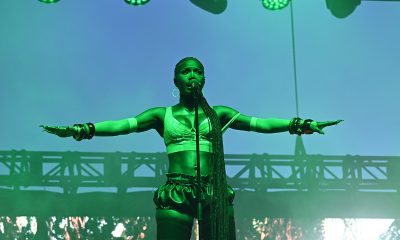
 World Pride 20252 days ago
World Pride 20252 days agoWorldPride recap: Festival, parade, fireworks, and Doechii
-

 U.S. Federal Courts2 days ago
U.S. Federal Courts2 days agoJudge temporarily blocks executive orders targeting LGBTQ, HIV groups
-

 Photos2 days ago
Photos2 days agoPHOTOS: WorldPride Parade
-

 Photos2 days ago
Photos2 days agoPHOTOS: WorldPride Street Festival and Closing Concert


